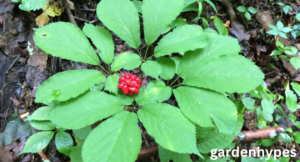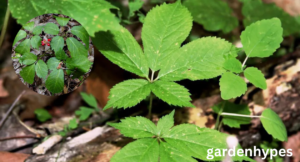Wild Ginseng Look-Alikes How to Identify and Avoid Them
Introduction to Wild Ginseng
What is Wild Ginseng?
Wild ginseng, also known as Panax quinquefolius, is a native plant species that grows in the shady, rich woodlands of North America. Recognized for its healing properties and rich medicinal history, this plant has long held legendary status in herbal medicine. Unlike cultivated ginseng, wild Ginseng Look-Alikes grows naturally without human intervention. Its slow growth rate and limited habitat make it rare and valuable.
click in link pokeweed look alikes
But what truly sets wild ginseng apart? It’s the deep roots, both literally and metaphorically. Ginseng roots are considered “man-shaped,” often resembling a tiny human body, which is one reason they’ve been prized for centuries. These roots are believed to hold powerful restorative properties, used to improve stamina, reduce stress, enhance mental clarity, and boost immunity. The older the root, the more potent it’s believed to be—making it highly sought-after by herbalists and collectors worldwide.
Despite its incredible popularity, wild ginseng is not easy to find. It hides in remote forested hillsides, and due to overharvesting and habitat loss, its numbers are dwindling. That’s why knowing what it looks like—and how to distinguish it from imposters—is crucial.
Why is Wild Ginseng So Valuable?
Wild ginseng’s high value stems from a mix of traditional medicine, scarcity, and slow natural growth. It’s especially coveted in East Asian markets, particularly China and Korea, where it’s often used in teas, tonics, and traditional health remedies.
Buyers can pay hundreds, even thousands, of dollars for a single mature wild ginseng root. The price fluctuates depending on its age, shape, and condition. Because of this, poaching and illegal harvesting have become serious issues.
Harvesting wild ginseng is tightly regulated in many states and provinces. Foragers need permits, must adhere to harvesting seasons, and often are required to replant berries to ensure sustainability. Failure to follow these rules can result in heavy fines or even jail time. So if you’re out in the woods searching for ginseng, identifying the real deal is more than just important—it’s legally necessary.
The Importance of Proper Identification
Legal and Ethical Considerations
You might think identifying ginseng is just about making sure you’re getting the good stuff. But in reality, it’s also a matter of following the law. Wild ginseng is a protected species in many parts of the United States and Canada. Misidentifying a plant and harvesting it illegally, even by mistake, can land you in serious legal trouble.
For example, some states require a ginseng-harvesting license. Others may allow harvesting only during specific months. In national parks or protected lands, digging up any plants may be strictly prohibited. Ignorance isn’t an excuse that holds up when you’re caught with a rare plant you shouldn’t have taken.
Ethically, harvesting a plant that only looks like ginseng means disrupting the forest floor unnecessarily. You’re not only taking a plant you may not need, but also possibly damaging native ecosystems. Some look-alikes play crucial roles in their environment—whether they’re food sources for wildlife, pollinator-friendly species, or erosion control plants.

In short, misidentifying ginseng doesn’t just mean disappointment; it can mean fines, jail, and unintentional environmental harm. Learn it right before you dig.
Dangers of Misidentification
Some wild ginseng look-alikes are harmless. Others? Not so much. Take poison ivy, for example. It’s a notorious ginseng impersonator when it’s young, especially before it starts climbing. Rubbing up against it while thinking it’s ginseng could leave you itching for days. Literally.
Then there’s Virginia creeper. This fast-growing vine has leaves that look very much like ginseng at a glance—especially when you’re moving fast or the lighting is low. But Virginia creeper contains raphides (tiny crystals that can irritate skin and mucous membranes) and isn’t something you want to handle without gloves.
click in link pokeweed look alikes
Buckeye seedlings are another common imposter. Their five-leaflet design resembles ginseng, but their seeds are toxic if ingested. Mistaking one for ginseng and turning it into tea? That could make you very sick—or worse.
So yes, misidentification isn’t just an inconvenience. It’s a safety issue, and one that shouldn’t be taken lightly.
Key Features of Wild Ginseng
Leaf Structure and Arrangement
The leaves of wild ginseng are the plant’s most visible and distinguishing feature—especially during spring and summer. Typically, a mature ginseng plant has a compound leaf structure with five leaflets, which is why it’s often confused with other five-leaflet plants like Virginia creeper or young buckeye.
Here’s what to look for in the leaves:
- One central leaflet is larger than the others.
- Two pairs of smaller leaflets extend opposite each other from a central stem.
- All five are connected to a single point at the top of the stalk.
This arrangement forms a “hand” shape, with leaflets radiating like fingers from a palm. Leaflets have serrated (toothed) edges, and the veins are prominent. In contrast, Virginia creeper and other look-alikes often have a different leaflet size ratio or smoother edges.
Ginseng leaflets are thin and delicate, with a matte green finish—not glossy like some of its look-alikes. By mid-summer, you’ll often see the leaves starting to droop slightly, giving the plant a lazy, relaxed appearance.
Still, relying on leaf structure alone isn’t foolproof. Many plants have five-leaflet arrangements, and some ginseng plants, especially young ones, only show three leaflets. That’s why experienced foragers always double-check other features, like stem color, root appearance, and plant location.
Common Wild Ginseng Look-Alikes
Virginia Creeper (Parthenocissus quinquefolia)
Virginia creeper is perhaps the most commonly mistaken plant for wild ginseng. At first glance, the five-part leaf structure looks identical. But the similarities stop there.
This climbing vine grows aggressively in both forests and urban areas. Its leaflets, while also five in number, tend to be more uniform in size than ginseng’s, and the tips of the leaflets are often more pointed. The stems are often red or purplish, especially in younger plants, which helps distinguish them from the light green or tan stems of ginseng.
Unlike ginseng, Virginia creeper has a woody vine base that clings to trees, rocks, or fences. Ginseng is never a climbing plant—it always grows upright from the ground. That’s a dead giveaway right there.
click in link pokeweed look alikes

More importantly, Virginia creeper contains oxalate crystals, which can irritate your skin or mouth if handled or ingested improperly. While not deadly, it’s definitely unpleasant. Plus, handling or harvesting it instead of ginseng is not only disappointing but can contaminate your harvest bag.
If you’re ever in doubt, gently pull the plant and examine the base. Ginseng has a fleshy, carrot-like root that smells earthy and distinct. Virginia creeper does not.
FAQs
- How do I make sure I’ve found real ginseng?
To ensure you’re identifying real wild ginseng, check for the signature five-leaflet arrangement, with one larger leaflet at the top and two smaller pairs below. The plant should have a single unbranched stem, and mature plants typically have red berries in late summer. Most importantly, dig gently to inspect the root, which should be tan, forked, and human-like in shape with visible root neck scars (bud scars)—each representing a year of growth. - Can you eat ginseng look-alikes?
Some ginseng look-alikes are harmless, but others can be toxic. For example, buckeye seedlings and Virginia creeper are both potentially toxic if ingested. Poison ivy, while not typically ingested, can cause severe allergic reactions through skin contact. Always be 100% certain of identification before consuming anything from the wild. - Are there toxic plants that look like ginseng?
Yes. Several wild ginseng look-alikes are toxic. Notably:
- Poison Ivy (Toxicodendron radicans): Can cause skin rashes.
- Virginia Creeper (Parthenocissus quinquefolia): Contains oxalate crystals.
- Buckeye Seedlings (Aesculus spp.): Seeds and foliage are poisonous.
Proper education and field guides are essential to avoid these dangers.
- What’s the best season to find wild ginseng?
The best time to forage for wild ginseng is from late summer through early fall, typically August through October. During this time, the plant is mature, with visible berries, and the leaves and root system are fully developed—making it easier to distinguish from look-alikes. - Do ginseng roots have any specific smell?
Yes. Wild ginseng roots have a distinct, earthy, slightly bitter scent, often described as similar to carrots with a hint of licorice. If you’ve harvested a root that lacks this smell, it might be a look-alike. The root should also be tan-colored, wrinkled, and feel firm but not hard or woo
